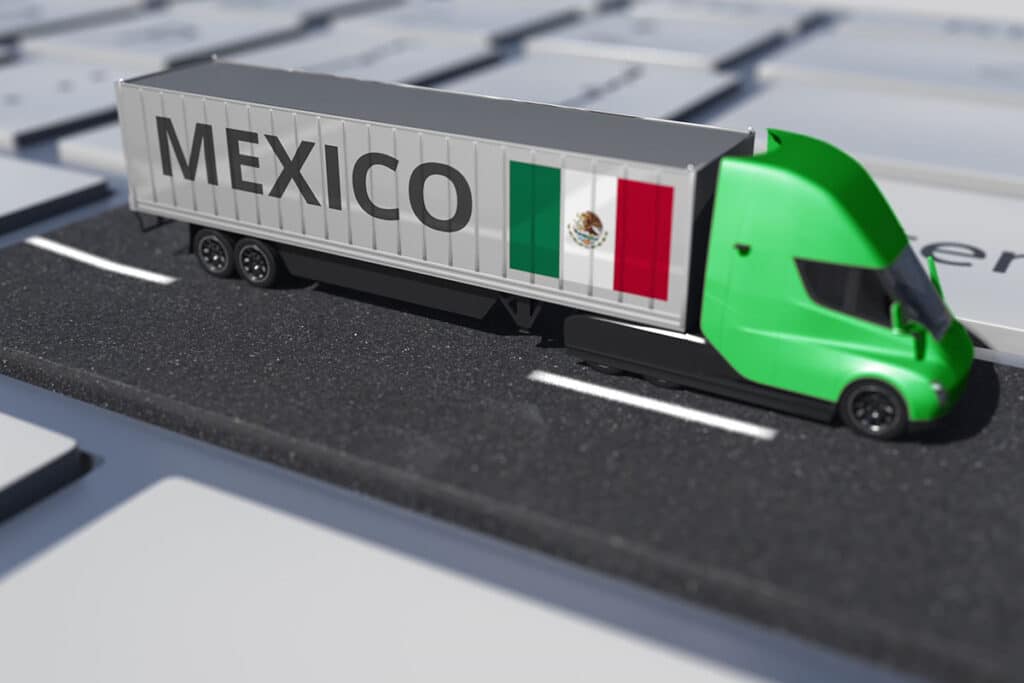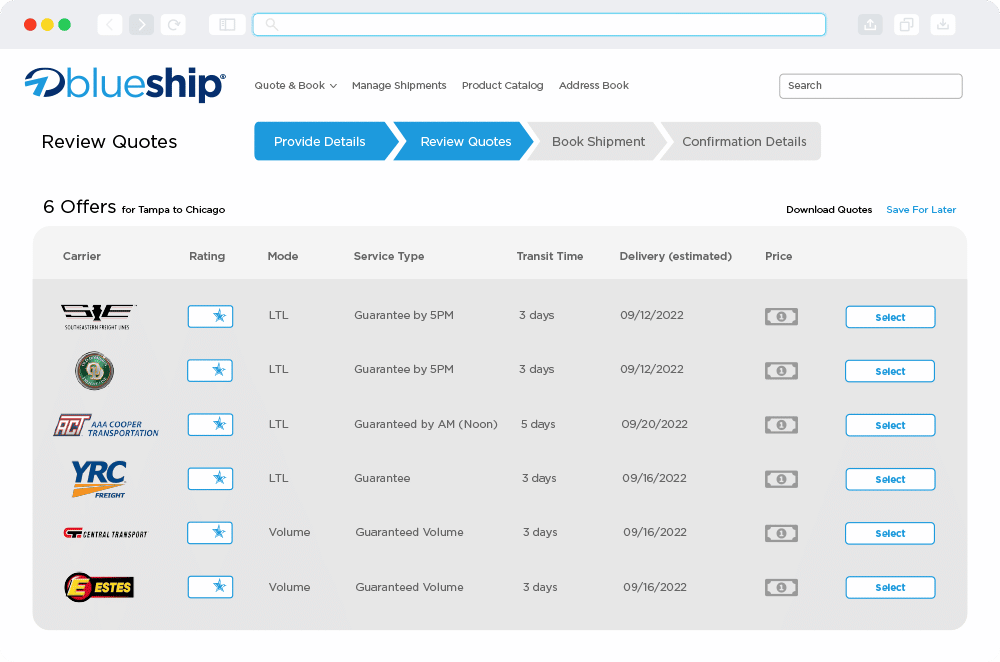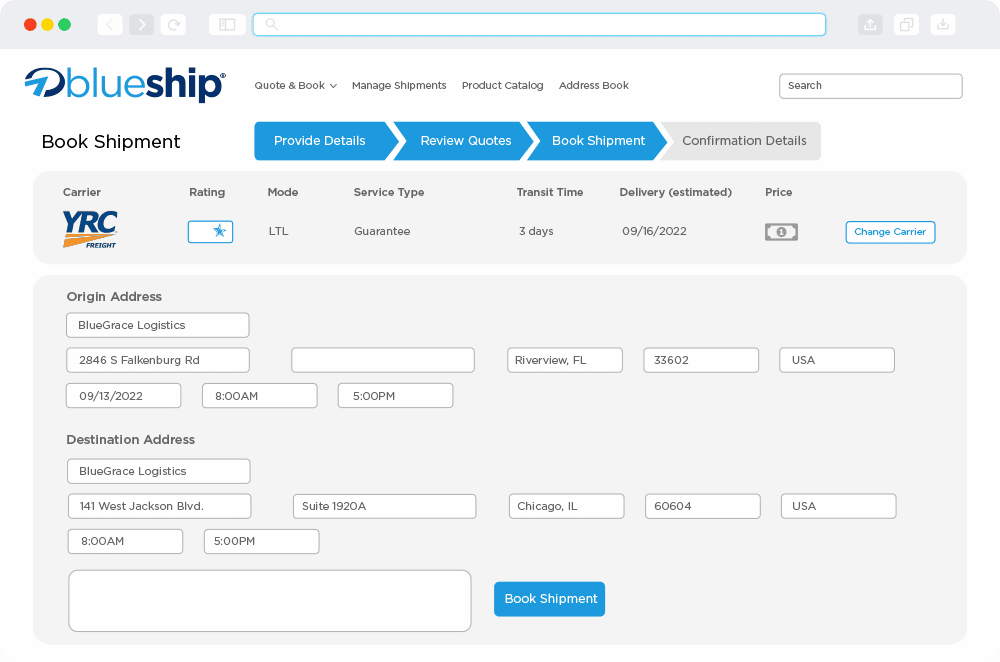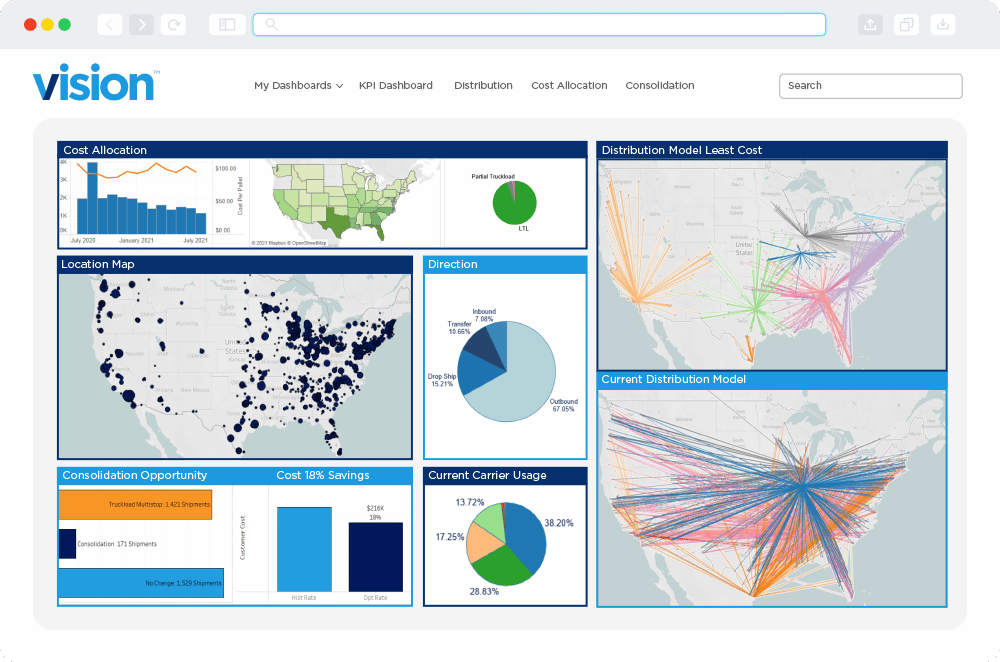
Shipping to Mexico from the US: What Can You Expect?

Shipping to Mexico opens up a world of opportunities for businesses seeking to expand their horizons and tap into new markets. From electronics to automotive parts, chemicals to produce, the demand for goods from the United States in Mexico is vast and varied, making it an ideal destination for nearshoring.
But what exactly can you expect when shipping to Mexico? That’s precisely what this post will uncover. Let’s delve into the nuances of the process, shedding light on the steps, challenges, and considerations that come into play.
Whether you’re a seasoned logistics professional or a business exploring cross-border logistics opportunities, the goal is to provide you with valuable insights and knowledge to better prepare you for the shipping journey ahead.
So, let’s explore what lies ahead as we navigate the waters of shipping to Mexico from the US.
Download The Latest Nearshoring Report!
Preparation: What Steps Should I Take Before Initiating the Shipping Process?
Before embarking on the shipping journey to Mexico, it’s crucial to lay a solid foundation through careful preparation. In this section, let’s look at the essential steps to take before initiating the shipping process and delve into the key tasks that will set you up for success.
Overview of Initial Steps: Navigating the Starting Point
The first step in any successful shipping endeavor is understanding the landscape ahead. Take the time to assess your shipping needs, including the volume and nature of the goods you’ll be transporting, as well as any specific requirements or constraints.
Next, consider your timeline and budget. How soon do you need the goods to arrive in Mexico, and what resources are available to support your shipping efforts? By setting clear objectives and parameters upfront, you’ll be better equipped to make informed decisions throughout the shipping process.
Tasks and Considerations: Paving the Way for Smooth Sailing
Once you’ve defined your objectives, it’s time to roll up your sleeves and dive into the nitty-gritty of preparation. Here are some key tasks and considerations to keep in mind, which we’ll explore in more detail later in the post:
- Gathering Documentation: Begin by identifying the types of documentation you’ll need for your shipment, such as bills of lading, commercial invoices, and certificates of origin. Ensuring that you have the correct paperwork in order will streamline the customs clearance process and prevent delays.
- Determining Shipping Requirements: Consider the unique requirements of shipping to Mexico, such as customs regulations, import duties, and documentation standards. Familiarize yourself with any restrictions or prohibitions that may apply to your goods and plan accordingly.
- Selecting Transportation Modes: Evaluate the various transportation options available for shipping to Mexico, including trucking, rail, air, and ocean freight. Consider factors such as cost, transit time, and the nature of your goods when selecting the most suitable mode of transportation.
By taking these initial steps and addressing key tasks upfront, you’ll pave the way for a smooth and successful shipping process to Mexico.
Paperwork: What Documentation Do I Need for Shipping to Mexico?
As you gear up to ship your goods to Mexico, navigating the paperwork landscape is key to ensuring a hassle-free process. In this section, we’ll walk you through the ins and outs of the required documentation, providing you with a clear roadmap to tackle this crucial aspect of your shipping journey.
Decoding Documentation Requirements: Essential Paperwork
Shipping to and from Mexico requires a variety of documents to comply with customs regulations and facilitate the smooth flow of goods across the border. Here’s a breakdown of the essentials you’ll need:
- Commercial Invoice: This document provides detailed information about the goods being shipped, including their description, quantity, value, and origin. It serves as the basis for customs valuation and determines import duties.
- Bill of Lading: As a contract between the shipper and the carrier, the bill of lading outlines the terms and conditions of transportation. It serves as a receipt for the goods and a document of title, enabling the transfer of ownership during transit.
- Certificate of Origin: This document verifies the country of origin of the goods and may be required to qualify for preferential tariff treatment under free trade agreements. It provides assurance to customs authorities regarding the origin of the goods and their eligibility for tariff benefits.
- Packing List: An itemized list of the contents of each package or container, the packing list facilitates customs inspections and ensures accurate delivery. It provides detailed information about the contents, including descriptions, quantities, and weights.
Ensuring that your paperwork is accurate, complete, and well-organized is crucial for a smooth shipping experience to Mexico. By meticulously preparing and organizing the necessary documentation, you’ll minimize the risk of delays and complications during the shipping process.
Customs Process: How Can I Ensure Seamless Clearance for My Freight?
Embarking on the journey from the US to Mexico involves navigating through the intricacies of customs procedures. Here’s a breakdown of the typical customs clearance process for importing goods from the US:
- Document Submission: The first step in the customs clearance process is the submission of required documents we talked about earlier, including the commercial invoice, bill of lading, certificate of origin, and packing list. These documents provide customs authorities with essential information about the goods being imported.
- Customs Inspection: Once the documents are submitted, customs authorities may conduct a physical inspection of the goods to verify their contents and ensure compliance with Mexican regulations. This inspection may involve examining the goods, checking for any prohibited items, and verifying the accuracy of the documentation.
- Duties and Taxes Assessment: After the inspection, customs authorities will assess any applicable duties, taxes, or tariffs on the imported goods. These fees are based on various factors, including the value, type, and origin of the goods, as well as any applicable trade agreements or exemptions.
- Customs Declaration: Once the duties and taxes are assessed, the importer must complete a customs declaration form, declaring the value and nature of the imported goods. This declaration serves as a legal document and provides customs authorities with additional information for record-keeping and enforcement purposes.
Understanding and successfully maneuvering through the customs clearance process is a critical aspect of importing goods into Mexico. By adhering to these steps, you can ensure your cross-border freight moves smoothly through customs and reaches its destination without unnecessary delays or complications.
Logistics Planning: What Transportation Options Are Available When Shipping to Mexico?
The Mexican shipping process offers a range of transportation options to choose from, each with its own advantages and considerations. Here’s an overview of the main modes of transportation:
- Trucking: Trucking offers flexibility and reliability for shipping goods to Mexico, catering to both Less Than Truckload (LTL) and Full Truckload (TL) shipments. This mode is particularly advantageous for shorter distances or time-sensitive deliveries. With well-established trucking networks and cross-border transportation services, it’s a popular choice for many shippers.
- Rail: Rail transportation provides an efficient and cost-effective option for shipping large volumes of goods over longer distances. Mexico has an extensive rail network, making it an attractive choice for transporting freight, especially for bulk commodities and intermodal shipments.
- Air: Air freight offers the fastest transit times for shipping goods to Mexico, making it ideal for urgent or high-value shipments. While air transportation can be more expensive than other modes, it provides unparalleled speed and reliability, particularly for time-critical deliveries.
- Ocean: Ocean freight is a cost-effective option for shipping large volumes of goods to Mexico, especially for international shipments. While transit times may be longer compared to other modes, ocean freight is well-suited for transporting bulky or heavy cargo, such as raw materials or manufactured goods.
Selecting the Right Transportation Mode
Choosing the most suitable transportation mode requires careful consideration of various factors, including the nature of your goods, delivery requirements, budget constraints, and transit times. Here’s a guide to help you select the right mode for your shipment:
- Assess Your Shipment Needs: Start by evaluating the size, weight, and nature of your goods, as well as any specific delivery requirements, such as speed or reliability.
- Consider Transit Times: Determine your desired transit times and compare them across different transportation modes to find the most suitable option for your timeline.
- Evaluate Cost Considerations: Assess the costs associated with each transportation mode, including freight rates, fuel surcharges, customs fees, and other applicable charges.
- Review Service Reliability: Research the reliability and track record of transportation providers for each mode, considering factors such as on-time delivery performance and customer reviews.
- Factor in Customs and Border Requirements: Consider any customs clearance and border requirements associated with your chosen transportation mode, ensuring compliance with Mexican regulations.
By following these steps and carefully evaluating your transportation options, you can select the most suitable mode for shipping your goods to Mexico and ensure smooth delivery to your destination.
Delivery: What Are the Final Steps in the Mexican Shipping Process?
The final steps of shipping to and from Mexico involve delivering your goods to their destination and completing any remaining paperwork. Here’s what you need to know about these crucial stages:
- Delivery to the Destination: Once your goods reach the border or port of entry in Mexico, they will be transferred to a local carrier for final delivery to their destination. Depending on the transportation mode you’ve chosen, this may involve trucking, rail, or other modes of inland transportation.
- Completion of Paperwork: Upon arrival at the destination, you may need to complete additional paperwork to finalize the import process and ensure compliance with Mexican customs regulations. This may include signing off on delivery receipts, confirming the accuracy of shipment details, and providing any required documentation to local authorities.
Tips for Successful Delivery: Ensuring Smooth Operations
To ensure successful delivery and minimize potential issues during the final stages of the Mexico shipping process, consider the following:
- Communicate with Your Logistics Provider: Maintain open communication with your cross-border logistics provider to stay informed about the status of your shipment and address any concerns or questions that may arise.
- Coordinate with Local Contacts: If possible, establish contacts or partnerships with local agents or businesses in Mexico to facilitate smooth delivery and navigate any language or cultural barriers.
- Monitor Delivery Progress: Keep track of your shipment’s progress using tracking tools or communication channels provided by your logistics provider. This will allow you to proactively address any delays or issues that may arise during transit.
- Address Customs Clearance Issues Promptly: If there are any discrepancies or issues during customs clearance at the destination, work closely with your logistics provider and customs broker to resolve them promptly and ensure timely delivery.
By following these tips and staying proactive throughout the delivery process, you can help ensure a smooth and successful shipping experience for your goods to Mexico!
Ready to take your shipping strategy to the next level? Enhance your business strategy with valuable insights from our latest Nearshoring Report. Download it now!
Related Posts
How to Expand Your Business with Cross-Border Shipping to Mexico
How to Expand Your Business with Cross-Border Shipping to Mexico
Read The Logistics Blog®
Harnessing Nearshoring Potential: Answers to Key Questions
Harnessing Nearshoring Potential: Answers to Key Questions
View Whitepaper
What is Nearshoring and Friendshoring?
What is Nearshoring and Friendshoring?
Read The Logistics Blog®






